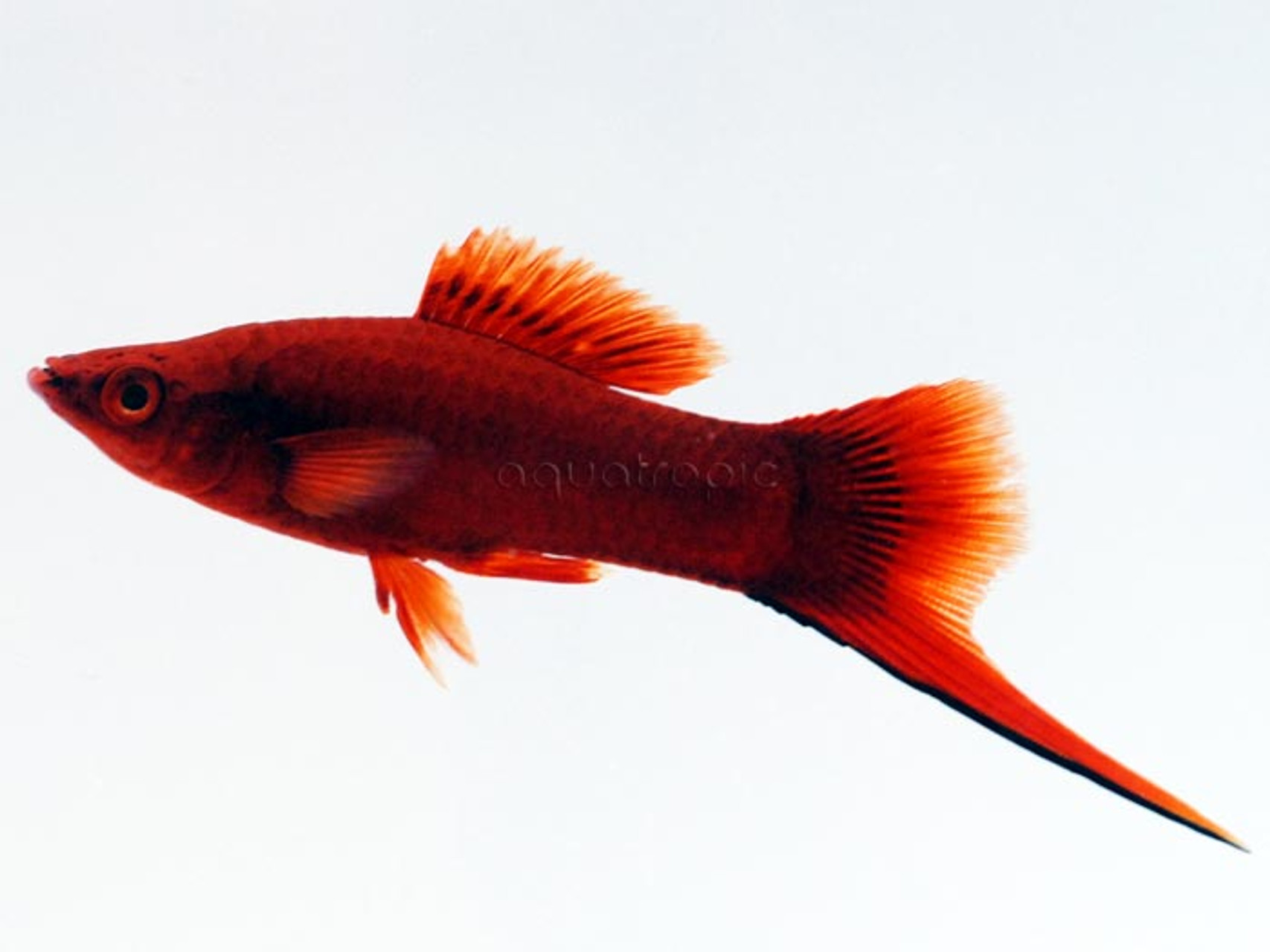Swordtails (Xiphophorus hellerii)

Livebearing fishes, which are species that give birth directly to small juveniles rather than laying eggs, are some of the most highly recommended fishes for beginner aquarists. They tend to be easy to care for, resistant to disease and highly colorful, so it’s not hard to see why they have remained so popular over the years. Included in this group are guppies, platies and mollies, but perhaps the most impressive of the lot are the swordtails.
The species most common in the aquarium trade is said to be Xiphophorus hellerii (often misspelled as X. helleri), known as the Green Swordtail, or, for most aquarists, simply as THE swordtail. There are, in fact, many different species of swordtails scattered throughout Central America (most of which have tiny ranges and are seldom seen in aquariums), but X. hellerii is by far the most widespread species, occurring along the Caribbean coast of Southern Mexico to Honduras. It can be found in nearly any kind of habitat, from stagnant swamps to swift, mountainous streams, which helps to explain its adaptability in the home aquarium.
The natural coloration of this fish is a bit muted, being silvery green with a prominent stripe on the side. Males possess a greatly elongated lower lobe to the tail which is thought to be a result of females selectively mating with those possessing the most exaggerated finnage, similar to how the peacock got its feathers. Beautiful as this fish is, aquarists have spent generations tinkering with its looks, resulting in countless varieties that sport highly unnatural colors and patterns. Aquatropic carries ten of these, including favorites like the Red Velvet, Koi and Pineapple.
With a maximum size approaching six inches, this livebearer is most suitable for a medium or large aquarium. The sexes are easily identifiable, even as juveniles, as males possess a modified anal fin (called a gonopodium) used for internally fertilizing the female’s eggs. Males can be a bit quarrelsome with each other, so it is often recommended to only keep one to a tank (unless that tank is sufficiently large enough to safely house more). Females can be kept in greater numbers, and it is always a good idea to provide several to keep the males busy. If well fed and cared for, it won’t take long for the itty bitty baby swordtails to start appearing. To maximize their chances of survival, it’s important to have plenty of hiding spots, and, like the parents, they will eat most any dry food that is dropped in front of them.